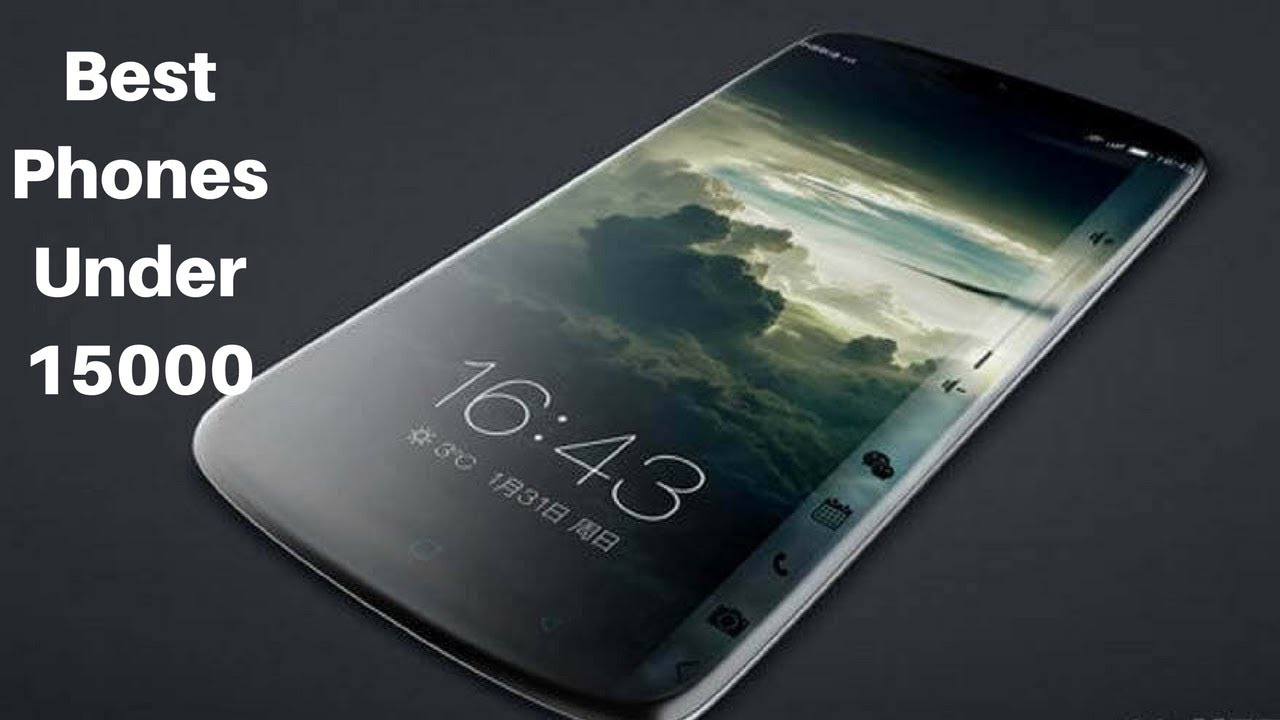It’s true that today, you really don’t need to spend a whole lot of money to get a feature-packed smartphone. Samsung, Xiaomi and Realme have been consistently delivering excellent value options under Rs. 15,000, and we’ve added some of their latest launches to our June refresh of this buying guide.
Realme finally managed to launch its youth-centric Narzo series, which complements its other offerings. Samsung had a new launch too with the Galaxy M21. Some older models that were featured in the April edition of this guide have been replaced by equivalent or better offerings thanks to changes in pricing.
If you have a budget of Rs. 15,000 for getting a new smartphone, we have done the research for you. After reviewing multiple smartphones in this segment, here are the models that are a cut above the rest, in no particular order.
Best phones under 15,000
| Phones under Rs. 15,000 | Rating (out of 10) | Price in India (as recommended) |
|---|---|---|
| Redmi Note 9 | 8 | Rs. 11,999 |
| Realme 6i | 8 | Rs. 12,999 |
| Poco M2 Pro | 8 | Rs. 13,999 |
| Samsung Galaxy M21 | 7 | Rs. 13,999 |
| Realme Narzo 10 | 8 | Rs. 11,999 |
| Redmi Note 9 Pro | 8 | Rs. 13,999 |
| Realme 6 | 8 | Rs. 14,999 |
| Redmi Note 8 | 7 | Rs. 11,999 |
| Vivo U20 | 8 | Rs. 11,990 |
Redmi Note 9
The Redmi Note 9 is the entry-level offering in the Redmi Note 9 series from Xiaomi. It largely shares the same design as the Redmi Note 9 Pro and the Redmi Note 9 Pro Max. The Redmi Note 9 sports a 6.53-inch display with a hole-punch front camera in the top left corner. There is Corning Gorilla Glass 5 to protect the panel from scratches. The display has thick borders but these are acceptable for the price.
Xiaomi has picked the MediaTek Helio G85 SoC to power the Redmi Note 9. It is an octa-core processor with two Cortex-A75 cores and six Cortex-A55 cores. The Redmi Note 9 is available in three variants: 4GB of RAM with 64GB of storage, 4GB of RAM with 128GB of storage, and 6GB of RAM with 128GB of storage. These are priced at Rs. 11,999, Rs, 13,499, and Rs. 14,999 respectively. The Redmi Note 9 houses a 5,020mAh battery and you get a 22.5W charger in the box.
The Redmi Note 9 has an IR emitter on the top which can be used to control appliances. At the back, it has a quad-camera setup consisting of a 48-megapixel primary camera, 8-megapixel ultra-wide-angle camera, 2-megapixel macro camera and 2-megapixel depth sensor. The Redmi Note 9 manages to take good photos in favourable light and the AI is quick to detect scenes. Low-light camera performance was average and the Night mode did not make a huge difference to quality.
Realme 6i
The Realme 6i can be best described as a toned-down version of the Realme 6. This smartphone however retains key hardware from the Realme 6 including the MediaTek Helio G90T SoC and 90Hz refresh rate, which isn’t common at this price point. The Realme 6i sports a 6.5-inch display with a hole-punch front camera at the top, and has a side-mounted fingerprint scanner.
The Realme 6i has a plastic body and there are two colour options. The MediaTek Helio G90T is capable of handling day-to-day tasks and gaming quite well. There are two variants of the Realme 6i offering 4GB and 6GB RAM, but the storage remains the same at 64GB. The smartphone packs a 4,300mAh battery and is capable of 30W fast charging but comes with a 20W charger in the box.
Realme has equipped the 6i with a quad-camera setup consisting of a 48-megapixel primary camera, an 8-megapixel ultra-wide-angle camera, a portrait camera, and a 2-megapixel depth sensor. Photos taken with the Realme 6i were good, and the camera reproduced good dynamic range. The wide-angle camera created slight barrel distortion at the edges of frames. Low-light camera performance isn’t as good, and the phone takes a while to capture a shot in Night mode.
Poco M2 Pro
The Poco M2 Pro is targeted at the budget segment. It has a premium design and packs in a big 6.67-inch display just like the Poco X2. It had the standard 60Hz refresh rate instead of the higher 120Hz refresh rate that the Poco X2 has. Poco has used Corning Gorilla Glass 5 at the front and back, and has also opted for a P2i coating on the M2 Pro, which makes it splash-resistant to some extent.
This smartphone is powered by the Qualcomm Snapdragon 720G SoC which we’ve also seen in competing models such as the Redmi Note 9 Pro. There are three variants of the Poco M2 Pro; 4GB of RAM with 64GB of storage, 6GB of RAM with 64GB of storage, and 6GB of RAM with 128GB of storage. These three variants are priced at Rs. 13,999, Rs. 14,999 and Rs. 16,999 respectively.
The Poco M2 Pro packs in a 5000mAh battery and was capable of very good battery life when we tested it. The company also provides a 33W charger that gets the phone to 95 percent in an hour. The Poco M2 Pro has a quad-camera setup with a 48-megapixel primary shooter. The phone captures good-looking photos in daylight, but its wide-angle camera captured weaker colours and details. In low light, the main and wide-angle cameras struggled with exposure and details. Night mode wasn’t too effective.
Samsung Galaxy M21
We were quite surprised by how similar the new Samsung Galaxy M21 was to the Galaxy M30s. In fact, other than a higher-resolution selfie camera on the new model, both phones are virtually identical. The best past is that Samsung has priced the Galaxy M21 lower than the Galaxy M30s, which makes it a better pick.
Some of the phone’s strong points include its crisp AMOLED display, low weight, very good battery life, and decent app performance. It runs Samsung’s One UI 2.0 interface on top of Android 10. It’s powered by the widely used Exynos 9611 SoC, which is not the most powerful especially when you have more powerful phones based on Qualcomm and MediaTek SoCs in the same segment. Still, for general use and a bit of light gaming, it gets the job done.
The triple rear cameras are decent during the day but they struggle a bit in low light. The 20-megapixel selfie camera is a notable improvement over that of the M30s though, as pictures taken during the day had good detail and low-light shots were usable too.
The Samsung Galaxy M21 received a price hike in June 2020 and it now starts at Rs. 13,999 for 4GB of RAM, 128GB storage variant. The higher-end variant is now priced at Rs. 15,999, which has 6GB of RAM and 128GB of storage.
Realme Narzo 10
Realme recently launched its much-awaited Narzo series, and the Narzo 10 is a good offering for under Rs. 15,000. Realme is targeting the youth demographic here, focusing on style and gaming performance. The Narzo 10 has the MediaTek Helio G80, which handles games well, and overall app and multitasking performance is solid too. Battery life is also one of this phone’s strong suits.
The main area where the Narzo 10 could have done better is its cameras. Daylight performance was good with all the rear cameras and the single front one, but low-light performance left us wanting more. The camera app could have been a bit more intuitive too, especially for some of its core features. Realme UI looks fresh and interesting, but there’s still a lot of bloatware preinstalled.
There’s just one configuration, with 4GB of RAM and 128GB of storage. At just Rs. 11,999, the Narzo 10’s little issues can be forgiven as there’s no denying the immense value you get for your money.
Redmi Note 9 Pro
The Redmi Note 9 Pro has been a solid recommendation from us in this price segment, ever since it launched. It features a big 6.67-inch display. We found the phone to be bulky and heavy at 209g in weight but it is well designed.
It is powered by the Snapdragon 720G SoC and comes in two variants, one with 4GB of RAM and 64GB of storage, and the other with 6GB of RAM and 128GB of storage. The base variant is available for Rs. 13,999 which is a minor bump up from its launch price of Rs. 12,999 due to the GST hike.
Realme 6
The Realme 6 continues to be the only phone under Rs. 15,000 to offer a display with a 90Hz refresh rate, similar to some flagships currently in the market. We found the Realme 6 to be well designed, but the side-mounted fingerprint scanner might not appeal to everyone. The device is slightly on the heavier side, tipping the scales at 191g.
The Realme 6 is powered by the Mediatek Helio G90T which is capable of delivering some serious performance, especially in games. Realme offers three variants: 4GB of RAM with 64GB of storage, 6GB of RAM with 128GB of storage, and 8GB of RAM with 128GB of storage. We found the camera quality to be good in daylight, producing good amounts of detail. The wide-angle camera offers a wider field of view but the dynamic range isn’t great. Low-light camera output quality dips slightly but Night mode improves this.
The Realme 6 got a price hike recently and the base variant is now priced at Rs. 14,999 and is the only one that fits within our budget, following the second price hike. You will have to spend more for the other variants.
Redmi Note 8
We saw the Redmi Note 8 retailing at Rs. 11,999, post the GST price hike and that’s recently been raised once again to Rs. 12,499 for the base variant. However, it’s still a good phone with decent all-round performance.
The Redmi Note 8 has a crisp full-HD+ display and is powered by the Qualcomm Snapdragon 665 SoC. The base variant has 4GB of RAM and 64GB of storage while the top variant has 6GB of RAM and 128GB of storage. Both are available in this price range.
Xiaomi offers a quad-camera setup on the Note 8, with the primary one being a 48-megapixel shooter. It also has a wide-angle camera and a macro shooter. We found the camera performance to be good for the price. Low-light photos were noisy and blotchy, and we did have trouble with autofocus in poor lighting conditions.
Vivo U20
The U series from Vivo was specially created to compete with online-exclusive offerings from Xiaomi and Realme. The Vivo U20 is powered by the capable Qualcomm Snapdragon 675 SoC, packs in a 5,000mAh battery, and has a triple camera setup at the back. The phone is a little bulky because of its battery. It has a Micro-USB port at the bottom, which is a little disappointing since the Type-C standard is now common in this price segment.
Vivo includes an 18W charger in the box which helps reduce charging time. The performance is good for the price, and this smartphone can play games and multitask easily. We found the cameras to be below average. If you are planning on using this as your primary device for taking photos, you may want to consider the other phones in this price range.
There are two variants of the Vivo U20: 4GB of RAM and 6GB of RAM. Storage remains the same at 64GB for both. A price hike has resulted in the base variant price to go up to Rs. 12,990 while the top variant is priced at Rs. 13,990.



Average Rating